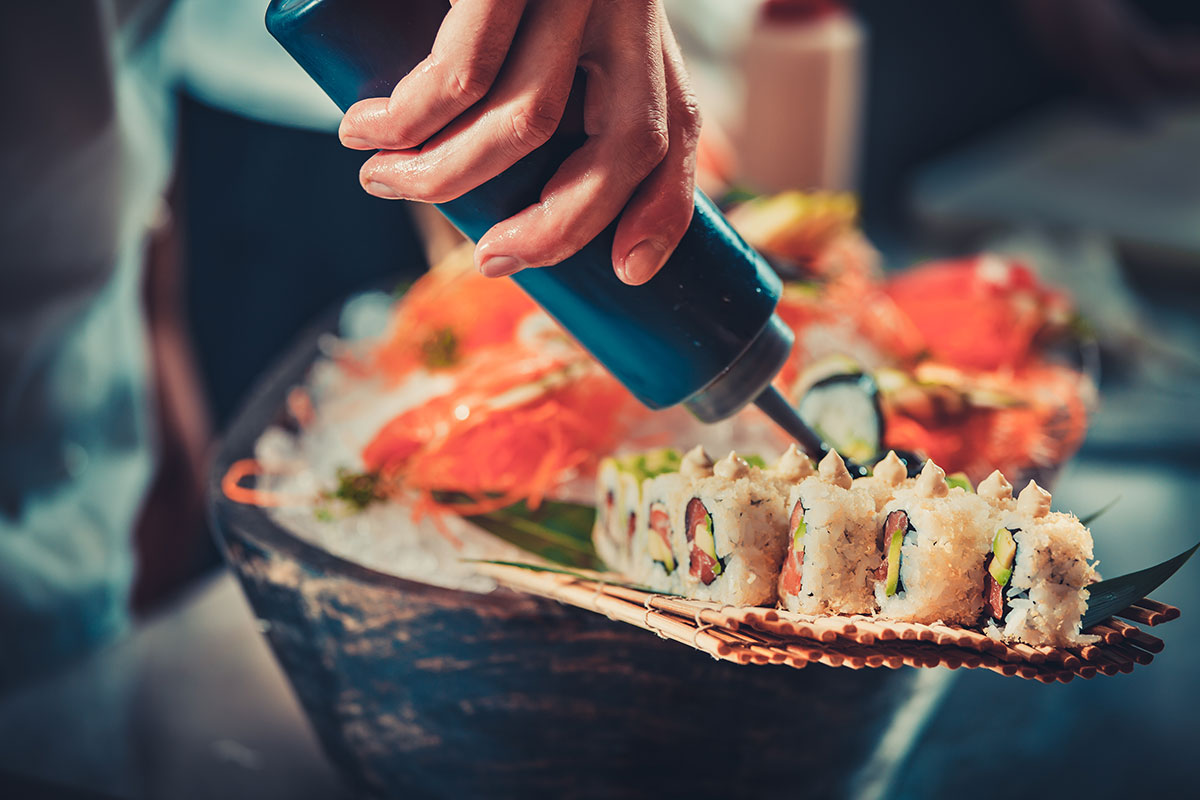Pungent wasabi paste with your sashimi and a sweet teriyaki sauce on a tender grilled chicken breast are probably familiar flavours when it comes to Japanese cooking. Mastering some classic sauces and marinades means you’ll be able to enjoy the piquant, umami, and aromatic flavours of Japanese cuisine any time. Learn about some of the key ingredient sauces used in Japanese cuisine, and keep these five amazing recipes in mind for dinner this week.
Sauces used in Japanese cooking
Soy sauce and rice vinegar are staples of Japanese sauces, along with ponzu, mirin, and sake. They can be used as standalone sauces or combined to create incredible flavours.
- Soy sauce – Japanese cooking hasfive main varieties of soy sauce, and they vary according to how much wheat, soybean, and other ingredients are used.
- Vinegar –Rice, sake, and black vinegar are popular types of vinegar used in Japan.
- Miso – Miso is commonly used as a sauce ingredient, and is categorised into thered, white, and mixed types.
- Wasabi – Wasabi paste is made from grounding wasabi (also known as Japanese horseradish) or by adding water to wasabi powder. Wasabi paste is served with sushi and used to make sauces in cooking.
- Cooking sake – This rice wine is used in sauces and other dishes to enhance flavour.
- Mirin – Mirin is a sweet cooking sake with more sugar and less alcohol than regular cooking sake.
- Ponzu – Made from rice vinegar, mirin, fish flakes, yuzu (a citrus fruit), and seaweed, this sauce can be used in sauces, marinades, or as a topping.
- Ajipon – As Japan’s number one ponzu brand, this ponzu is lower in salt and contains soy sauce.
- Dashi – This broth is an essential ingredient in Japanese cuisine. Made from seaweed and dried fish shavings, dashi adds a mild, subtle flavour and a hint of saltiness to dishes.
- Shirodashi – This soup base is used in broths and stocks to boost flavour.
- Mentsuyu – Made with soy sauce, dashi, mirin, and sugar, mentsuyu is often served with noodles as a dipping sauce or used in stir-fries to flavour the dish.
- Usuta sauce – This Japanese version of Worcestershire sauce is made with ingredients such as tomatoes, onions, carrots, dried sardines, soy sauce, and herbs. It can be used as a condiment for meat and seafood dishes.
- Tonkatsu sauce – Dense and rich, tonkatsu is a very popular sauce used on fried pork cutlets and other meats. Similar to steak and barbeque sauce, tonkatsu sauce is made with soy sauce, vinegar, sugar, mirin, and Worcestershire sauce.
5 delicious marinade and sauce recipes to try
Now you’re aware of the sauces used in traditional Japanese cooking, you’re ready to try them out. These five amazing marinade and sauce recipes are easy to make and they work well with meat, fish, and seafood dishes.
1. Classic Japanese marinade
This flavoursome Japanese marinade recipe from Martha Stewart requires only five ingredients and is absolutely delicious when used for chicken and fish, or even steak, tofu, and vegetables. You can substitute mirin for the vinegar and sugar.
2. Classic Japanese marinade (version 2)
This is another version of a classic Japanese marinade. This recipe includes grated garlic and ginger as well as sake and mirin. Use it for marinating meat or fish and for dishes involving a cooking-down process. You can use it as a teriyaki sauce over grilled dishes, or try switching it up by adding some grated apple or honey for extra sweetness, or adding chilli powder or sauce to taste.
3. Yakiniku sauce
Yakiniku sauce is a sweet Japanese barbeque sauce that’s perfect for grilled meats. As Japanese barbeque typically omits marinating before grilling, the sauce plays a major part in flavouring high-quality cuts of meat. This recipe uses traditional ingredients like sake, mirin, miso, bonito flakes, and sesame seeds to create a rich, decadent barbeque sauce. Use it as a dipping sauce for thinly sliced, well-marbled short ribs.
4. Sesame soy sauce glaze
This delicious sweet and salty glaze can be used as both a marinade and a glaze after cooking. Using just five ingredients, this easy recipe goes well with chicken and other meat dishes. Top the cooked meat with sesame seeds, and add some minced garlic if you’re using it as a marinade. To thicken the glaze, add some cornstarch or reduce the sauce on a low boil until it’s thickened.
5. Tangy wasabi marinade
This recipe combines classic Japanese staples like wasabi and sake with dry mustard to create a tangy, aromatic marinade. It’s perfect for fish and meat dishes, and marinating for several hours is recommended to allow flavours to infuse. While the recipe incorporates wasabi, the addition of vinegar reduces the sharpness. If you’d like the tanginess of wasabi you normally get with your wasabi in sushi, serve your fish or meat with some fresh wasabi paste on the side.
Japanese cuisine is much more than sushi and tempura, and the variety of sauces and marinades are a great way to expand your horizons and experience the full range of flavours offered in this popular cuisine.
Kobe Jones offers an extensive menu celebrating the best of East and West. Contact us today to make a reservation and experience the beauty and simplicity of Japanese cooking.







 (8 votes, average: 3.38 out of 5)
(8 votes, average: 3.38 out of 5)